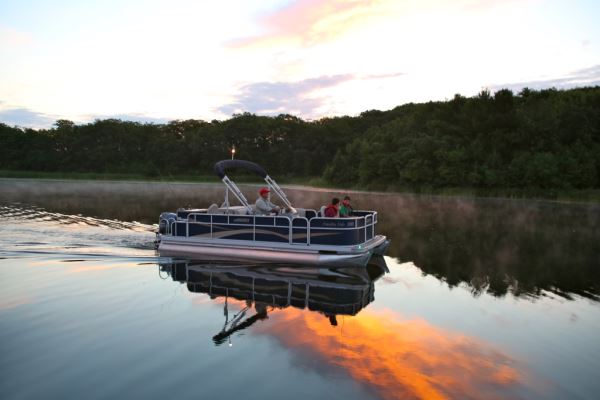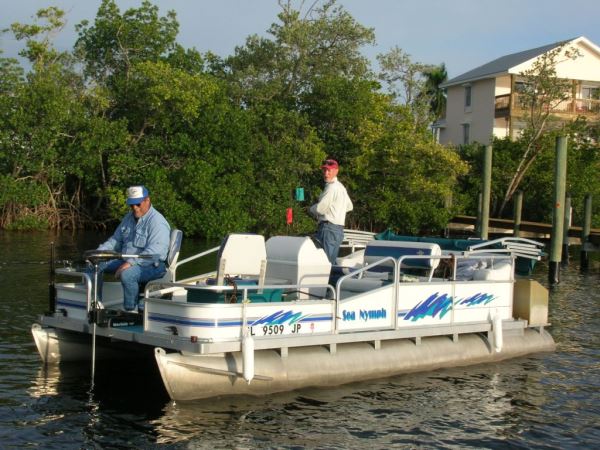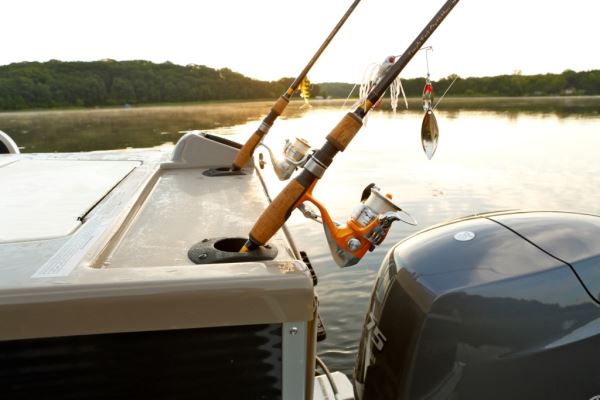
More than any other month, February is when I really want to go fishing. The enhanced off-season attraction to the sport is likely caused by a combination of having gone several months since I last wet a line, knowing that the open water fishing season is just a thaw or three away. And my attendance at winter boat and sport shows, where I see all the new boats and fishing tackle on display and being demonstrated. All the factors conspire come February to get me excited about a sport I can’t enjoy for at least two more months.
 I’ve been attending the winter boat and sport shows long enough to cast a skeptical eye at many of the “hot new” baits and “must-have” accessories that are often shelled at the exhibitions—but that’s part of the fun. From self-casting rods and self-swimming lures to electronic fish attractors, I’ve sat through many a demo and been offered many a sample to try by their makers who hope I’ll help spread the word about the item’s abilities to help my readers and listeners catch more fish, which I do if they work and ignore if they don’t.
I’ve been attending the winter boat and sport shows long enough to cast a skeptical eye at many of the “hot new” baits and “must-have” accessories that are often shelled at the exhibitions—but that’s part of the fun. From self-casting rods and self-swimming lures to electronic fish attractors, I’ve sat through many a demo and been offered many a sample to try by their makers who hope I’ll help spread the word about the item’s abilities to help my readers and listeners catch more fish, which I do if they work and ignore if they don’t.
That said, I’ve discovered some of my favorite fishing and boating innovations ever at the annual winter events. I remember seeing my first tube bait—a soft plastic lure that resembled a squid that the bass pro doing the demonstrating called a “Fat Gitzit.”
 After casting it into the Hawg Trough tank, full of bass that had refused traditional lure offerings cast over their heads all afternoon, he couldn’t pull the bait through the water fast enough to keep the fish from biting the “hot new lure” that has lived up to the hype and become a mainstay among anglers fishing in both fresh and salt water. At a more recent sport show fishing demonstration, I was skeptical of my first “wacky worm” rig—until I saw fish attack the plastic worms that looked like they had been hooked in the middle by mistake.
After casting it into the Hawg Trough tank, full of bass that had refused traditional lure offerings cast over their heads all afternoon, he couldn’t pull the bait through the water fast enough to keep the fish from biting the “hot new lure” that has lived up to the hype and become a mainstay among anglers fishing in both fresh and salt water. At a more recent sport show fishing demonstration, I was skeptical of my first “wacky worm” rig—until I saw fish attack the plastic worms that looked like they had been hooked in the middle by mistake.
On top of the annually improving sonar fish-finding technology, from line-counter reels and dedicated baitwells to underwater fishing lights, circle hooks, remote-controlled bow-mounted trolling motors and time (and back) -saving power-anchors, I’ve found gear at shows that I’d hesitate to fish without.
 One of the items that I am most looking forward to installing and using on my pontoon this season combines two of those technologies. If you’ve read this column much over the years, you probably know that I like to troll, relying on the on-the-move fishing method to catch everything from trout and crappies to tuna and tarpon.
One of the items that I am most looking forward to installing and using on my pontoon this season combines two of those technologies. If you’ve read this column much over the years, you probably know that I like to troll, relying on the on-the-move fishing method to catch everything from trout and crappies to tuna and tarpon.
A key to trolling success is identifying the depth the fish you are targeting are found on a particular day of fishing, and then being able to keep your boat—and the baits it tows—over that depth for as much as possible. That specific depth may follow a feature like an original creek bed in a man-made reservoir, or simply a contour over which the fish are finding bait and feeding or merely find comfortable due to temperature, light penetration or cover. Identifying the target depth is only half the battle; as a troller staying over that depth and following the contour is the trick and requires constant vigilance over the depth finder while maneuvering the boat to stay the course over the active fish.
 Enter LakeMaster charts, which offers digital charts of most popular inland waters—including my home lake, a suburban water supply reservoir that, frankly, I was (pleasantly) surprised would be included among larger, more popular lakes in our region. The Follow the Contour feature directs the trolling motor to follow a specific depth contour that is displayed on a LakeMaster digital GPS map. The chosen contour line can be automatically followed in either direction and you have the option to offset a certain distance from a chosen contour line—or even the shore. With the LakeMaster SD card installed in a late-model Humminbird Fishfinder linked to a newer Minn Kota bow-mounted trolling motor, such as the three-year-old Terrova on our boat, the new i-Pilot Link system combines the chart information, GPS readings and depth-finding capabilities of the sonar and the power of the motor to automatically track any contour – and stay the course, while I busy myself with doing my best to fool the fish the technology keeps my pontoon over.
Enter LakeMaster charts, which offers digital charts of most popular inland waters—including my home lake, a suburban water supply reservoir that, frankly, I was (pleasantly) surprised would be included among larger, more popular lakes in our region. The Follow the Contour feature directs the trolling motor to follow a specific depth contour that is displayed on a LakeMaster digital GPS map. The chosen contour line can be automatically followed in either direction and you have the option to offset a certain distance from a chosen contour line—or even the shore. With the LakeMaster SD card installed in a late-model Humminbird Fishfinder linked to a newer Minn Kota bow-mounted trolling motor, such as the three-year-old Terrova on our boat, the new i-Pilot Link system combines the chart information, GPS readings and depth-finding capabilities of the sonar and the power of the motor to automatically track any contour – and stay the course, while I busy myself with doing my best to fool the fish the technology keeps my pontoon over.
That’s the theory, anyway. And I can’t wait to test it. I’ll be installing the i-Pilot Link system this spring and “messing about” with it as soon as Ma’ Nature allows, making this month a particularly frustrating February to be forced to fish vicariously through those pro’s atop the tanks. But be there I will. See you at the shows.

